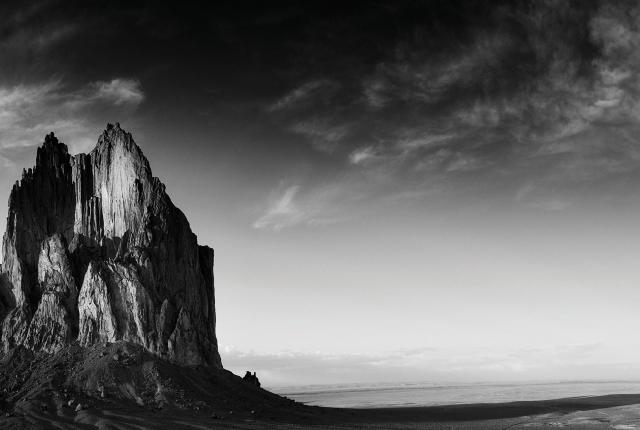Above: Ship Rock. Photograph by Jory Vander Galien.
Some 30 million years ago, the angry lava of a rumbling volcano seethed to life. Magma left in the volcano’s neck cooled into a cluster of ragged pillars—the only evidence that has remained of its one-time fluidity; time eroded the slopes away. The Diné people of the Navajo Nation say that a great bird carried their ancestors to this region in northwest New Mexico, then turned to stone. Some of the people dwelt atop the 7,177-foot Tsé Bit’a’í (“rock with wings”). But when lightning split the rock, they were stranded, unable to descend. Since then, the formation that most of us call Ship Rock has been held sacred, available to photographers with long-distance lenses but, since the 1970s, ruled off-limits to hikers and climbers. Seen from the air, its volcanic dikes reach away from the neck like wings. From the ground, it resembles a landlocked sailing ship, hence the name that first appeared on U.S. survey maps in the 1870s. The nearby town of Shiprock spelled its name as two words as well. A postal regulation likely fused it into one.

GETTING THERE
From Farmington, drive west on US 64 about 28 miles to the town of Shiprock. Go south on US 491 about 7 miles to IR 13. Admire the formation from the road only.


